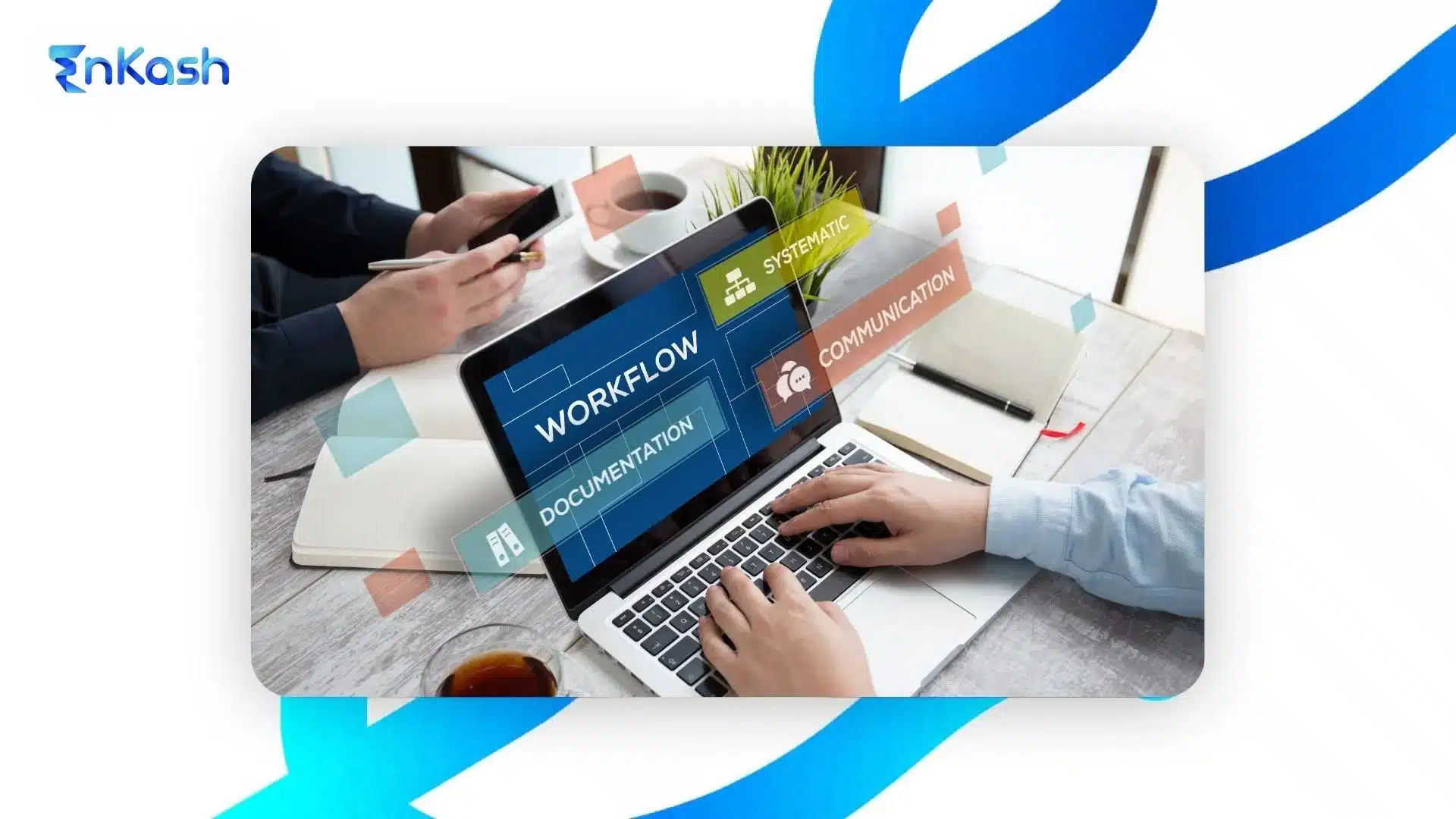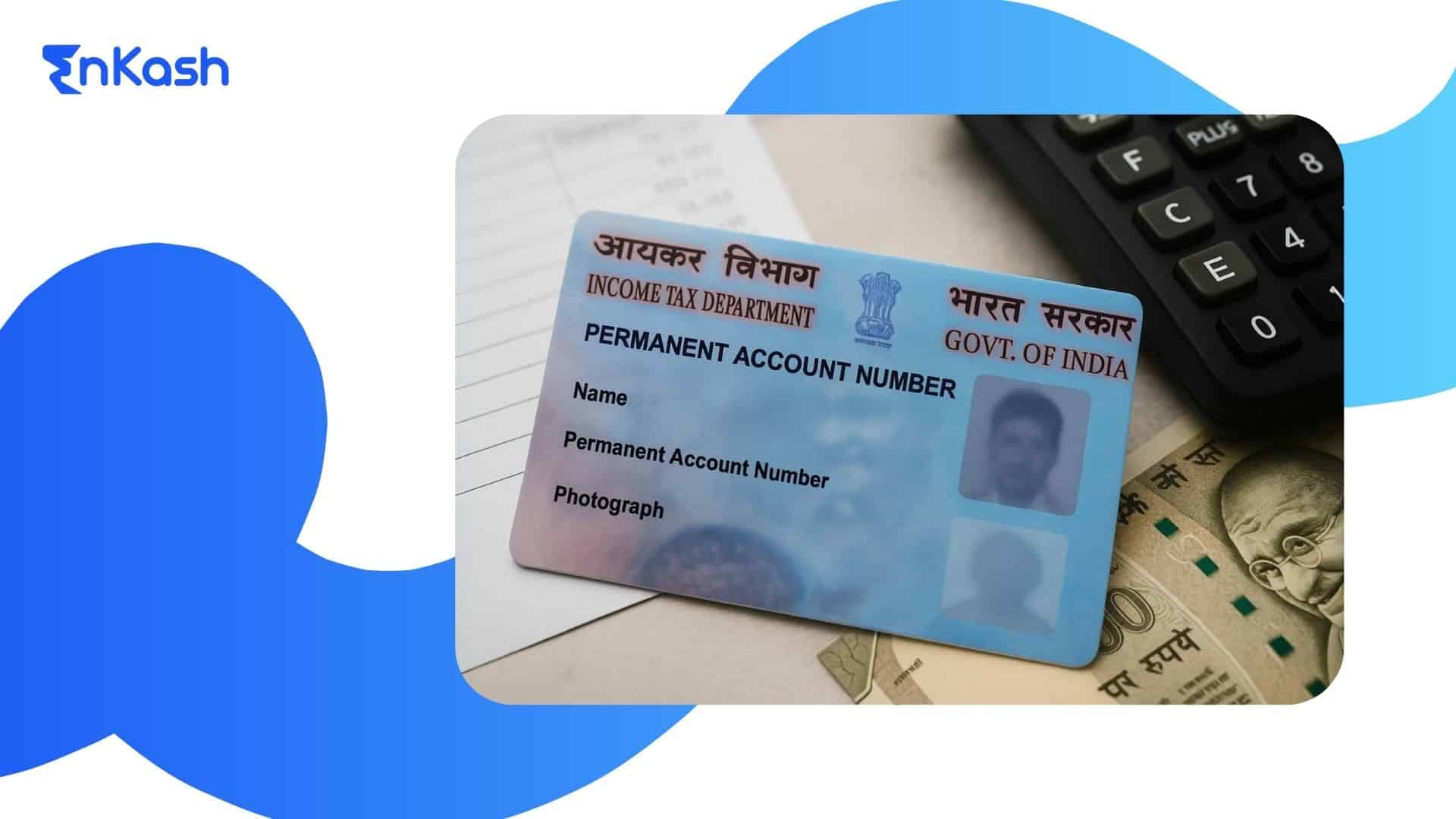What is Workflow Management?
Workflow management organizes and controls how tasks move through your business. It defines who does what, when they do it, and what happens next in every process. Instead of leaving work to chance, you create clear steps that guide tasks from start to finish.
Consider your daily operations: customer orders pile up while staff hunt for approvals, expense reports disappear into email chains, and inventory requests stall between departments. Workflow management transforms this chaos into smooth, automatic processes. When a customer places an order, the system instantly notifies inventory, triggers billing, and schedules delivery, all without manual handoffs or delays.
This is what workflow management does. It takes the guesswork out of getting things done. Your team spends less time figuring out what comes next and more time actually moving your business forward. The result is faster completion times, fewer errors, and happier employees who know exactly what they need to do.
What is a Workflow Management System?
A workflow management system has three core parts: design (mapping processes and assigning roles), execution (running processes automatically according to your rules), and monitoring (showing where tasks slow down so you can fix issues).
Here’s how it works. You design a customer onboarding workflow once. The system then handles every new customer that comes through. It knows which documents are required, assigns tasks to the right team members, follows up when deadlines approach, and tracks everything so you can see where delays happen.
The system includes several key components that work together. Task management assigns work to specific people and tracks deadlines. Process automation handles repetitive steps without human intervention. Collaboration tools let team members communicate and share documents. Analytics show you which processes work well and which need improvement.
Your workflow management system eliminates the chaos of manual handoffs. Instead of emails getting lost or approvals sitting in someone’s inbox, the system keeps everything moving. It ensures compliance with your business rules while giving you complete visibility into every process.
This foundation leads naturally to the tools and software that power these systems. The right workflow management software transforms these concepts into practical solutions that save time and reduce errors in your daily operations.
Top Workflow Management Software and Tools for SMEs
Workflow management software comes in different forms to match your business needs and technical capabilities. You have three main categories to choose from. Cloud-based software runs online and costs less upfront. You pay monthly fees instead of big one-time purchases. Open-source tools give you more control but require technical knowledge to set up and maintain. ERP-linked options connect directly with your existing business systems, like accounting or inventory management.
Indian SMEs face specific challenges when choosing workflow management tools. Cost matters most. You need solutions that fit tight budgets without sacrificing essential features. Local support makes a difference when problems arise. Time zone differences and language barriers can slow down problem resolution. Internet reliability affects cloud-based tools, so you need software that works even when connectivity is spotty.
Popular options include basic task management platforms that start around 500 rupees per user per month. Mid-range solutions offer process automation and reporting for 1,500 to 3,000 rupees monthly. Enterprise tools with advanced features cost more but provide comprehensive workflow management capabilities.
Start simple with basic task tracking and approval workflows. Add complexity as your team gets comfortable with the technology. Most businesses waste money buying features they never use or tools that are too complex for their current processes.
For instance, certain industries rely on workflow tools that address their specific operational needs. In salon businesses, managing appointments, staff schedules, and payment handling is part of the core workflow. Time Tailor provides an example of software designed exclusively for salons, combining website creation with online booking and basic scheduling features. While such tools focus on a particular segment of the workflow, they can complement broader systems that support organization-wide processes. This shows how SMEs can start by improving one critical workflow and expand into more comprehensive automation as they grow.
Key Components of Workflow
Every workflow has five essential parts that work together to get things done. Input is what starts the process. Tasks are the actual work that needs completion. Roles define who does what. Approvals control quality and compliance. Output is the finished result.
Input triggers your workflow. A customer submits a support ticket. An employee requests time off. A new client signs up for services. These inputs kick off specific sequences of tasks that your team needs to complete. Without clear inputs, workflows start randomly or not at all.
Tasks are the specific actions people take to move work forward. Collect customer requirements, assign project team members, schedule kickoff meetings, and send welcome materials. Each task has a clear purpose and connects to the next step. Well-defined tasks eliminate confusion about what needs to happen next.
Roles assign responsibility to specific people or departments. The sales manager qualifies new leads, customer service representatives handle support tickets, and project managers coordinate team deliverables. Clear roles prevent work from falling through cracks or getting duplicated.
Approvals ensure compliance with your business rules and quality standards. They act as checkpoints where someone reviews work before it continues. In customer onboarding workflows, a manager approves new account setups before the system grants access. This ensures security standards and prevents unauthorized access.
Output delivers the final result and often triggers the next workflow. A completed sales order becomes input for the fulfillment workflow. A finished employee onboarding triggers the performance review workflow. Quality outputs eliminate rework, while poor outputs create costly delays and customer dissatisfaction.
Types of Workflows
You have three main workflow types to choose from. Sequential workflows move tasks one at a time in order. Parallel workflows run multiple tasks at the same time. State machine workflows change direction based on conditions and decisions.
Sequential workflows work like an assembly line. One person completes their task before the next person starts theirs. Employee onboarding follows this pattern. HR creates the employee profile, IT sets up accounts and equipment, the manager assigns workspace and initial tasks, and training conducts orientation. Each department completes its part before the next begins.
Most Indian SMEs start with sequential workflows because they mirror existing manual processes. Your team already understands the concept. Someone does their part and passes the work to the next person. This makes training easier and reduces resistance to change.
Parallel workflows let multiple people work on different parts of the same process simultaneously. When launching a product, marketing creates promotional materials while production scales manufacturing and sales contact distributors. All teams work simultaneously, rather than waiting in sequence.
You save significant time with parallel workflows, but need better coordination. Everyone must be aware of what others are doing to avoid conflicts or duplicated work. Small teams often struggle with this complexity.
State machine workflows adapt based on conditions. Customer support tickets follow different paths based on urgency. Low-priority requests go to junior staff, medium-priority issues route to experienced agents, and critical problems escalate immediately to senior technicians. The workflow changes its path based on the conditions.
Indian SMEs benefit most from starting with sequential workflows for core processes like invoicing and payroll. Add parallel workflows for order fulfillment once your team gets comfortable. Save state machine workflows for complex approval processes where amounts or risk levels determine different paths.
Choosing the right workflow type depends on your process complexity and team structure. Regardless of which type you choose, all workflows deliver measurable benefits to your business operations.
Benefits of Workflow Management
Workflow management delivers four major benefits that directly impact your bottom line. You save money, gain speed, reduce errors, and improve compliance.
Cost savings come from eliminating redundant manual tasks and reducing the time spent on administrative work. You no longer need multiple people handling the same approval or chasing down missing documents. Automated processes require fewer resources to complete the same work, letting you redirect staff to revenue-generating activities. Manual errors that require expensive corrections become rare.
Efficiency improvements show up immediately. Your team completes tasks faster when they know exactly what comes next. Automated routing eliminates delays caused by emails sitting in inboxes or documents waiting on desks. Processes that took days now finish in hours. Work flows smoothly between departments without confusion about handoffs or responsibilities.
Error reduction protects your reputation and saves rework costs. Automated workflows follow the same steps every time, eliminating human error in routine tasks. Validation rules catch problems before they become costly mistakes. Consistency improves as every process follows defined standards rather than depending on individual memory or interpretation.
Transparency gives you control over your operations. You see where every task stands in real time. Bottlenecks become obvious when workflows show you exactly where things slow down. Management gets visibility into team performance without micromanaging individual employees. Your team stays accountable because the system tracks progress automatically.
Compliance becomes manageable when workflows enforce your business rules. This matters especially for Indian MSMEs dealing with complex regulatory requirements. Automated workflows ensure approval limits get respected and documentation happens automatically as the system records every step and decision.
Best Practices for Workflow Management
Start simple and build from there. Your team needs time to adjust to new processes without feeling overwhelmed. Pick one straightforward workflow, like customer onboarding or employee time tracking. Master that before moving to complex multi-department processes.
Map your current processes first before designing anything new. Document exactly how work flows through your business right now. Talk to the people who actually do the work daily. They know where delays happen and which steps waste time. This foundation prevents you from automating broken processes.
Align workflows with your business goals from the start. If your goal is faster customer service, prioritize workflows that directly impact response times. If cost reduction matters most, focus on processes that eliminate manual work. Clear objectives guide every design decision and help measure success.
Train your team thoroughly before launching new workflows. People resist change when they do not understand it. Show them how workflows make their jobs easier, not harder. Provide hands-on practice with the new system. Address concerns and gather feedback during training.
Test everything before full rollout. Run workflows with a small group first. Find problems when they only affect a few people instead of your entire operation. Fix issues and refine processes based on real usage. This prevents costly mistakes that damage team confidence.
Measure outcomes to prove workflows work. Track completion times before and after implementation. Count errors, delays, and customer complaints. Document cost savings and efficiency gains. Numbers show whether workflows deliver promised benefits.
Aspect |
Workflow Management |
Project Management |
Purpose |
Manages recurring, repeatable processes that run continuously. |
Manages unique initiatives with a defined start and end date. |
Example |
Monthly payroll: collect timesheets, calculate wages, process payments, and generate reports. The same workflow repeats every month. |
Launching a new store: choose a location, negotiate a lease, design a layout, hire staff, stock inventory, and open for business. Ends once the store is launched. |
Focus |
Efficiency, consistency, error reduction, and smooth repetition. |
Delivering outcomes within time, budget, and scope constraints. |
Nature |
Ongoing, process-driven, stable over time. |
Temporary, goal-driven changes from project to project. |
Role in Business |
Keeps daily operations running smoothly (e.g., payroll, customer onboarding). |
Drives growth, change, and expansion (e.g., new product launch, market entry). |
Success Criteria |
Consistency and minimal oversight as processes mature. |
Completion on time, within budget, and meeting objectives. |
Tools |
Workflow management systems: track recurring processes, automate routine tasks. |
Project management tools: track milestones, budgets, resources, deadlines. |
Dependency |
Essential for maintaining stability and operational efficiency. |
Essential for innovation, growth, and strategic change. |
Conclusion
Workflow management transforms how Indian MSMEs operate by turning chaotic manual processes into organized, efficient systems. Your business cannot afford to lose money on scattered processes when competitors use automation to cut costs and improve speed.
The path forward is clear. Start with one simple process, like customer onboarding or employee time tracking. Map your current workflow, identify bottlenecks, and design a better system. Choose affordable tools that fit your budget and technical capabilities. Train your team thoroughly and measure results to prove the investment works.
Indian MSMEs that embrace workflow management gain significant advantages. You reduce operational costs while improving accuracy and speed. Your team works more efficiently when they know exactly what comes next in every process. Customer service improves when nothing falls through the cracks or gets delayed.
The future belongs to businesses that optimize their operations through smart workflow management. Technology costs continue dropping while benefits keep growing. MSMEs that act now position themselves ahead of competitors still struggling with manual chaos.
Your next step is simple. Pick one repetitive process that wastes time or creates errors. Map it out. Find the right tool. Implement gradually. The transformation starts with that first workflow.
Frequently Asked Questions
1. How is workflow management different from project management?
- Workflow management handles recurring processes like payroll or invoice approvals that repeat regularly.
- Project management handles one-time initiatives like launching a new store or rolling out a new product.
- Both are important: workflows keep your business stable, while projects drive growth.
2. How should Indian SMEs choose workflow management tools?
- Start simple: basic tools for task tracking and approvals.
- Check costs: solutions start from ₹500 per user per month.
- Look for local support in case issues arise.
- Ensure the tool works well even with unreliable internet.
3. What are some workflow management practices that work best?
- Map your current processes before automating.
- Start with one simple workflow, like customer onboarding.
- Align workflows with your business goals.
- Train your team well to reduce resistance.
- Measure improvements in cost, speed, and error rates.












